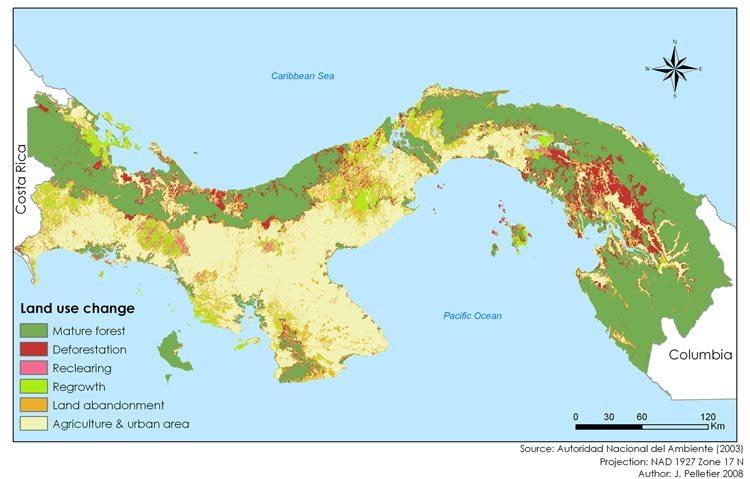OECD launches interactive website on regional well-being


The OECD has launched a regional well-being website based on an interactive map covering the organisation’s 34 member countries. It rates 362 sub-national regions with a relative score out of 10 in eight categories: income, health, safety, services, civic engagement, education, jobs and environment and reveals some large disparities.
The new website is part of the OECD’s Better Life Initiative, which looks beyond economic growth to measure overall well-being.
“Where people live has a huge effect on their quality of life,” said Rolf Alter, OECD Public Governance and Territorial Development Director, presenting the website at a conference of the EU Committee of the Regions in Brussels. “By zooming in like this, we can really see the big differences that exist between regions and work out what local and state governments must do to reduce them.”
The eight well-being factors, shown as different-coloured petals, are based on data measured at regional level on household income, life expectancy, homicide rates, broadband access, voter turnout, level of education in the workforce, employment rates and particulate matter in the air.
The score out of 10 indicates how a region is doing relative to others in the country and across the 34 OECD member countries. Clicking on a petal reveals the underlying indicator and a more detailed scoreboard positioning the region in its country and in the OECD.
Check it out here.
Research proves link between CR reporting and stock price uptick


New research offers proof that investment in, and subsequent reporting of, corporate social responsibility (CSR) improves a firm’s stock price.
Professor CB Bhattacharya, E.ON Chair in Corporate Responsibility and Dean of International Relations at ESMT European School of Management and Technology, examined stock market reactions to CSR communications, specifically the release of CSR reports, and found compelling new evidence linking CSR to stock prices.
The research was based on a sample of Fortune 500 firms who released CSR reports between 2005 and 2011. It found that annual stock prices react positively to changes in CSR performance when a firm has released a CSR report in that year. This confirms that CSR reports convey new information that’s seen as relevant and as having value by the market, says ESMT.
It also revealed that significant cumulative absolute abnormal returns and significant cumulative abnormal trading volumes occur around the release dates of CSR reports – suggesting investors do revise their expectations of future cash flows and/or risks of a firm in reaction to the release of its annual CSR reports and make trading decisions accordingly.
ESMT says that this is the first piece of research to examine whether and how the stock market reacts to the release of standalone CSR reports.
The research involved an event study that captured immediate short-term reactions of the stock market to the release of CSR reports. Following prior literature on event studies, Bhattacharya used both price-based and volume-based proxies to measure market reaction to CSR reports.
Bhattacharya says: “This research provides useful new information on an under-examined, yet critical stakeholder – investors. It shows that stock markets positively value the timely release of CSR reports helping to significantly strengthen the business case for CSR and lay to rest the argument that investors attach little value to CSR performance.
“It builds a strong business case for publishing standalone CSR reports, particularly for socially responsible firms. It also finds that there is an even greater benefit for firms, who operate in a weaker information environment, to publish an annual CSR report.”
The research was carried out in collaboration with Kun Yu from the College of Management at the University of Massachusetts and Shuili Du from the Peter T. Paul College of Business and Economics at the University of New Hampshire.
Read the full report here.
Picture credit: © Anthonycz | Dreamstime.com
Coca-Cola and partners to expand Project Last Mile in Africa


The Coca-Cola Company and its Foundations, the US Agency for International Development (USAID), the Global Fund to Fight AIDS, Tuberculosis and Malaria, and the Bill & Melinda Gates Foundation are expanding its “Project Last Mile” to include 10 African countries over the next five years.
The public-private partnership - currently focused on Tanzania and Ghana - applies Coca-Cola’s logistic, supply chain, distribution and marketing expertise to help African governments maximize the ability to get critical medicines and medical supplies the “last mile” to those who need it most in remote communities in Africa.
The commitment to expand includes an investment of more than $21m from the partners, as well as the official addition of USAID to the coalition. The next country where Project Last Mile is being implemented is Mozambique. The additional seven countries are in various stages of identification and discussion with local governments.
“We know our business can only be as strong as the communities we serve... Project Last Mile has been a great and growing success so far, and we look forward to working with our partners to improve lives across more communities and more countries,” commented Muhtar Kent, chairman and ceo of The Coca-Cola Company.
Cosmas Mwaifwani, the director general of the Medical Stores Department in Tanzania added: “Since we began working with our partners in 2010, we have been able to increase the availability of medicines in medical clinics by 20-30% in some places where we have implemented the direct distribution model. Additionally, the partners have shared distribution tools with us to enable us to efficiently reach more than 5,500 health facilities.”
Hobby Lobby Attempts to Claim Corporate Religion


Can a corporation pray? Can it attend religious services? Is it free to don religious garb? In other words, can a corporation exercise religion? All of those are questions raised by the Hobby Lobby case (Sebelius v. Hobby Lobby Stores, Inc., and the related case, Conestoga Wood Specialties Corp. v. Sebelius), likely to be decided by the U.S. Supreme Court in the coming days. More specifically, the issue facing the Court is whether a for-profit corporation be exempt from the Affordable Care Act (also called ACA or Obamacare) requirement that all companies cover certain FDA-approved birth control methods and devices as part of the health insurance packages offered to their workers.
This essential question has been percolating in the federal appeals courts for some time and has resulted in what is referred to as a circuit split -- three circuit courts have struck down the contraception coverage rule, while two others have upheld it. This means the federal appeals courts (the highest in the land below the Supreme Court) don't really know what to do with this aspect of the ACA and the Supreme Court should step in and clarify.
The featured challenger in this case, Hobby Lobby Stores, Inc., is a chain of arts and crafts stores owned by the Green family (devout Southern Baptists, apparently), the members of which have committed to run the company according to Christian religious principles. Hobby Lobby doesn't have a problem offering its employees insurance that covers most forms of birth control, it only objects to the coverage of drugs and/or devices that “end human life after conception.” (More on the other challenger, Conestoga Wood Specialties, here.)
Hobby Lobby's legal argument is that the Religious Freedom Restoration Act (RFRA) -- a 1993 federal law that states, in pertinent part, that the government "shall not substantially burden a person’s exercise of religion" -- provides it with an exemption to the contraceptive rule. If Hobby Lobby is right, then the government can only override the exemption if it can demonstrate a compelling public interest for doing so. As Pew helpfully explains, prior to the RFRA the government only had to demonstrate that a law that supposedly burdened one's religious practices advanced a "legitimate" government interest. This "legitimate interest" standard was articulated by the Supreme Court in Employment Division v. Smith, which backed away from the "compelling interest" standard that had previously been the law of the land. Religious groups were up in arms after Smith, prompting Congress to step in and, via the RFRA, change the standard back to the more exacting "compelling interest."
Crucially, the RFRA applies explicitly to persons and is silent on its application to for-profit corporations, such as Hobby Lobby. So, in order for Hobby Lobby to invoke the RFRA in the first place, it must succeed in convincing the Court that it is covered by the RFRA, which is tantamount to arguing that a corporation can "exercise" religion. One would be forgiven for scoffing at the suggestion, but according to recent Supreme Court precedent, the argument isn't so far-fetched. In its infamous Citizens United decision in 2010, for instance, the Court held that corporations and individuals shared the same First Amendment rights to political speech -- i.e., the right to make unlimited political donations. The very same First Amendment also protects an individual's right to freely exercise his or her religion (under the so-called "Free Exercise" clause), so it's not that much of a stretch to imagine the Court extending this aspect of the First Amendment to for-profit corporations, too.
Yet, even if the Court were to apply the RFRA to Hobby Lobby, the company would still need to show that the ACA's contraceptive provision is a "substantial burden" on its religious freedom. To accept that Hobby Lobby's religious freedom is substantially burdened simply because it is required to provide its employees with health insurance plans that will cover certain forms of birth control, however, would appear to test the bounds of reason. After all, Hobby Lobby is not forced to hand out IUDs and Plan B pills in its employees' orientation packets.
The ostensible burden on Hobby Lobby's religious freedom, rather, is really just a potentiality -- the prospect that it may have to pay for something in which it does not believe. In other words, it is entirely possible that no Hobby Lobby employee will ever seek coverage for the types of birth control with which the company takes issue, in which case the burden would remain theoretical. Unless, of course, we're really just talking about the philosophical burden on Hobby Lobby -- the company is burdened simply by being subject to this particular provision of the ACA, which conflicts with its politics -- in which case the Court's response ought to be: too bad. Hobby Lobby's view on the morality of certain forms of birth control may ultimately prevail in the marketplace of ideas and be legislated as such, but for now, it hasn't, and the company simply has to deal with it.
During oral argument in the Hobby Lobby case, the questioning eventually came to focus on the supposed abortive effects of the birth controls at issue. Justice Kennedy closed his questioning by asking whether, in Solicitor General Donald Verilli's view, a for-profit corporation could be compelled to pay for abortions. Roberts clarified by asking: “Isn’t that what we are talking about in terms of their religious beliefs? That [Hobby Lobby and Conestoga] have to pay for these four methods of contraception that they believe provide abortions?”
The lead attorney for the challengers, Paul Clement, confirmed Chief Justice Roberts' view that the case is, in fact, really about abortion. Yet, if that is indeed true, then we ought to consider whether these specific methods of birth control really are so-called "abortifacients." According to the amicus brief filed by a number of medical groups led by the American College of Obstetricians and Gynecologists, however, “there is a scientific distinction between a contraceptive and an abortifacient and the scientific record demonstrates that none of the FDA-approved contraceptives covered by the [challenged] Mandate are abortifacients.”
What if Hobby Lobby wins anyway (a distinct possibility)? Hobby Lobby's political opponents warn that, if a for-profit can use religion to escape this particular federal law, it would open theflood gates to corporations claiming that they are not bound by others. At oral argument, Justice Kagan gave voice to these concerns, recognizing that, were Hobby Lobby to prevail, private employers would then be allowed assert religious objections to gender discrimination laws, minimum wage laws, and family leave and child labor laws, all of which would be subject to what Kagan described as the “unbelievably high . . . compelling interest standard.”
A decision in Hobby Lobby is expected before the Court breaks for the summer (June 30), so be on the lookout. As always, SCOTUSBlog is a great resource, as are anything by Jeffrey Toobin, Dahlia Lithwick, and Adam Liptak. Stay tuned.
Image credit: Flickr/fanofretail
Big Food Battles Vermont Over GMO-Labeling Law


The recently launched, four-pronged suit against the state of Vermont’s genetically modified organism (GMO)-labeling law comes as no surprise. Last week, a group of the country’s largest grocery organizations filed suit against Vermont for its passage of a law (Act 120) requiring all manufacturers to label those products that contain GMO ingredients.
Big Food four stand up for GMO
The four “Big Food” companies -- the Grocery Manufacturers Association (GMA), the Snack Food Association, the International Dairy Foods Association and the National Association of Manufacturers -- allege that Vermont’s newly minted law contravenes federal law and cites the First and Fourteenth Amendments, the right of free speech and the commerce clause. It also cites the due process clause of the Fifth Amendment for Act 120’s “vagueness” in its prohibition of the use of certain words, such as natural, and other descriptors that the Vermont law has deemed confusing to consumers.
The plaintiffs defend their suit based on four counts relating to labeling mandates, alleged marketing restrictions and violations of the commerce clause. They have argued that Act 120 imposes unreasonable requirements on food manufacturing companies, which would be required to amend the labels on thousands of products before the act goes into effect on July 1, 2016.
GMA: The consumer already has the tools
They also assert that the state has acted beyond its capacity and that provisions already exist at the federal level for the consumer to make informed decisions, called the Organic Food Production Act.
“The Act appears not to recognize that the USDA has established the very system that the Act suggests is missing. Under the USDA’s “certified organic” program, food that qualifies for the certified organic label cannot be produced using GE plants or GE derived ingredients,” says the suit. It also suggests that voluntary labeling through programs like the Non-GMO Project already provides a voluntary method for consumers to select foods that don’t contain GMOs.
The power of commerce
It’s no surprise that the plaintiffs have hinged this suit on the powers of the federal commerce clause. It’s a popular tactic these days, as North Dakota demonstrated last May with its controversial suit against Minnesota’s New Energy Act. At the same time that Vermont’s GMO-labeling bill was moving through the state legislature last April, another issue was being fought out in Minnesota district court that would virtually upend the state’s efforts to regulate the purchase of “dirty” coal power. Stating that the New Energy Act regulated issues that were under the purview of the federal commerce clause, U.S. District Court Judge Susan Richards Nelson enjoined the state from enforcing parts of the law, effectively stalling some of the boldest efforts made to date to curb carbon emissions by power companies. In effect: Minnesota’s clean energy law conflicted with the Constitution.
In both situations, the power of the consumer to decide what is sold within his or her state has been placed at odds with federal agencies which many states say are failing to step up to the demands of their constituents – despite voters’ efforts to get federal laws enacted, first. In the case of GMA et al vs. Vermont, the plaintiffs allege that consumer desires and voting bloc expectations aren’t enough reason to provide manufacturing transparency.
Federal organic laws: A chicken-and-egg story
Interestingly, although the suit mentions the “certified organic” program, it fails to mention that federal organic laws were actually the outgrowth of enforced state regulations in California. This leads to a quandary not unlike the chicken-and-egg story: If states don’t have the right to regulate the foods imported and sold within their borders (except when there are proven safety issues at hand), then why has California been successful in regulating food production through laws enacted by the ballot box? And why did the federal government think it was such a great idea to pattern the majority of its regulations after California’s already-enforced laws?
The suit also doesn't mention the fact that a fair number of states have their own organic certification programs and regulations in force, which the USDA points out, "may also add more restrictive requirements due to specific environmental conditions or the necessity of production and handling practices in that State."
Where's Monsanto?
When this suit was announced, a number of advocacy groups jumped on board to alert consumers that “Monsanto had launched a suit against Vermont." Most publications do, in fact, point out that the suit is being launched by four associations, but few advocacy groups or publications have asked why Monsanto’s name is conspicuously absent from the lawsuit.
While advocacy organizations have worked hard over the past few years to link Monsanto to the GMA, the association has worked just as hard – particularly recently – to limit information about its membership, or whether Monsanto is in fact a voting member.
The list of plaintiffs on a court document such as this speaks volumes about the strength that a suit may have, but it also says a lot about just what those who fund its launch is expecting from the public, and what they may feel could be most vulnerable if consumers really don’t agree with their principles. The fact that the four associations are fighting the good fight for Monsanto’s interest but haven’t mentioned Monsanto’s membership unfortunately may not make it any easier for consumers to swallow the concept of GMO engineering.
And, as the suit has boldly pointed out, American consumers are quite adept at finding ways of moving away from products they don’t trust. With a rising number of countries rejecting or restricting GMO food manufacture and/or imports, clear labeling laws may turn out to be the easiest and least expensive compromise for all sides.
Image courtesy of GreggAvedon.com
Can Crowdsourcing Reduce the Environmental Impact of Fast Fashion?


In the new world of fashion, smart solutions are solving some of the most pressing issues when it comes to apparel production.
Retailers and designers are abandoning antiquated models of forecasting and yearlong design planning processes in favor of high-tech business platforms that empower the consumer as both buyer and style dictator. The proliferation of brands adopting user-generated, or “crowdsourced,” solutions such as Kickstarter and Krush to bestow their latest designs on the masses benefit greatly from predicting needs, scaling production and receiving upfront payments before ever hitting the cutting room floor.
Today’s online retail environment presents several opportunities for discovery and environmental stewardship. Audience engagement early in the design process provides customer agency and early adoption. By leveraging crowdsourcing as a feedback tool for production prediction, designers reduce risk and long-term environmental impact from over-production.
"Fashion crowdsourcing is the Internet-era combination of two venerable retail strategies: satisfying demand and building customer loyalty," explained Susan Scafidi, professor and academic director of the Fashion Law Institute at Fordham Law School in New York City to DailyFinance.
The co-creation model provides a powerful tool for customer engagement. A study by the Cone Communications research group revealed that 84 percent of Americans believe their ideas can help companies create products and services that are a win for consumers, business and society. Roughly 60 percent of people surveyed were more likely to buy a company's products and services if the company incorporated their ideas.
Carte Blanche allows users to vote on which styles will be manufactured. As they vet their final design by their audience, users become fully engaged in the design process from sketch to fabric to fit. The winning item is then produced by high quality craftspeople and delivered to customers at their true cost.
Luevo — a fashion retail site for eco-friendly, ethically made clothing — puts customers in the driver’s seat by letting them fund independent designers while placing a reserve on products they love before they go into production.
Brands course-correct through the crowdsourcing model by reducing production to only what is asked for in lieu of what they predict the end-user might buy. The average person wears only about 20 percent of their wardrobe — efficient evidence that involving consumers in the design process has the potential to increase satisfaction and decrease the problematic reality of an estimated 14.3 million tons of textile waste sent to landfills each year.
“Crowdsourcing allows me to draw resources away from less popular styles and focus time, money, and energy into producing only the most successful ones,” Carte Blanche founder Monica Noh told Fast Company. “We eliminate guess-work in the design process and show the customer the materials we've chosen, how each garment has been designed, and where we're producing them so we only make what we need and virtually eliminate overproduction.”
As designers large and small adopt the brand-consumer collaborative relationship, the fashion world has the potential to slowly re-shape its practices in an effort to win the hearts of increasingly conscious consumers.
Image courtesy of Carte Blanche
1 Million Hectare Reforestation Project Planned for Panama


A groundbreaking initiative launched in Panama highlights the role agroforestry can play in promoting sustainable socioeconomic growth, combating climate change and enhancing the value of ecosystems.
Establishing a precedent-setting alliance, ANCON (Panama's Association for the Conservation of Nature), the Panama Association for Reforestation (ANARAP), and the Panama Chamber of Commerce, Industry & Agriculture (CCIAP) on June 17 announced a sweeping project that envisions forestation or reforestation of 1 million hectares (2.47 million acres) of land.
Dubbed the "Alliance for 1 Million," the 20-year forestation project has three main goals: strengthen sustainable development of Panama's forestry sector; help realize the goals elaborated in Panama's National Forestry Plan; and help Panama meets its pledge to reduce carbon and greenhouse gas emissions by capturing as much as 7 million metric tons of CO2 per year.
The 'Alliance for 1 Million'
The "Alliance for 1 Million” forestation plan was designed by Rita Spadafora, who was recently named ANCON's executive director, ANARAP Director Robert Kroesen and CCIAP President José Luis Ford.
As the parties explain in a news release, the intention is to realize the sustainable development potential of Panama's forestry sector, help meet its commitment to reduce emissions, and gain the support necessary to protect the nation's extensive forest areas and rich biodiversity.
Implementing the plan will promote commercial reforestation projects, ecosystems restoration, development of agroforestry livelihoods and sustainable management of natural forests -- a core element in the rural economy, Alliance partners highlight.
Panama has been losing forest at rate exceeding 20,000 hectares (49,400 acres) per year. Associated degradation of land and water resources is estimated to extend across a 2 million hectare (4.94 million acre) area. Panama has carried out reforestation efforts, but those have barely managed to forest just over 75,000 hectares (185,250 acres), only 14 percent of what has been destroyed.
Reforestation, dignified jobs and employment
The Alliance expects that with complementary measures in place, the initiative would not only result in reforestation of 1 million hectares over a 20-year period, but also produce benefits that include the creation of dignified jobs, increased exports and increased tax revenues.
In addition, the alliance partners estimate that achieving the plan's goals would capture 7 million metric tons of carbon dioxide (CO2) per year; generate clean, renewable energy; reduce deforestation; and attract as much as $1 billion of investment to Panama's forestry sector in the first five years.
A public-private partnership for forest conservation and sustainable development
The “Alliance for 1 Million” plan's authors note that implementing the plan will require the participation and support of the new Panamanian government, NGOs, investors and civil society. Realizing the Alliance's goals, they elaborate, requires strengthening the institutional framework for promoting sustainable development of Panama's forestry sector.
That includes adoption of a new forestry law, defining forest land management best practices, promotion of a National Forestry Development Plan, and assuring the security of new investments in the forestry sector.
As Ms. Spadafora pointed out, the “Alliance for 1 Million” partnership is “the first step to lobby for a new forestry law that provides incentives for the conservation of natural forests and reforestation in Panama.”
Image credits: 1) Marcos Guerra, STRI; 2) Aide et al; Online August 3, 2012. Deforestation and reforestation of Latin America and the Caribbean (2001-2010); 3) Panama Autoridad Nacional del Ambiente (ANAM)
Harley-Davidson Launches an Electric Motorcycle


Iconic American motorcycle manufacturer Harley-Davidson Motor Co. is launching its first electric motorcycle. Calling it Project LiveWire, the company gave the public the first glimpse of the motorcycle at an invitation-only event on Monday in New York, the Associated Press reports. Select customers will then be able to ride the motorcycle and provide feedback. The bike is not yet for sale.
Harley-Davidson will kick off a 2014 U.S. tour of the bike with a trip down Route 66, visiting more than 30 dealerships along the way through the end of the year. Next year, the Project LiveWire Experience will continue in the U.S. and will be expanded into Canada and Europe.
People who don’t ride can take part in a simulated riding experience through a website created for the tour, projectlivewire.com. Feedback from riders along the tour will influence plans for longer term retail availability.
The company is low on details about the motorcycle but describes the bike as “tire shredding.” It will have a different sound. "The sound is a distinct part of the thrill," said Mark-Hans Richer, senior vice president and chief marketing officer for Harley-Davidson. "Think fighter jet on an aircraft carrier. Project LiveWire's unique sound was designed to differentiate it from internal combustion and other electric motorcycles on the market."
Harley-Davidson is getting the word out about the bike and tour through social media, including Facebook, Twitter, Instagram and a Youtube video. The video about the bike reminds people about the company’s past while pointing to its future. As Matt Levatich, president and chief operating officer for Harley-Davidson, said: “Harley-Davidson has reinvented itself many times in our history, with customers leading us every step of the way. Project LiveWire is another exciting, customer-led moment in our history."
There is one problem with electric motorcycles, and that is the lack of charging stations: “Electric motorcycles, for now, are practically limited by battery capacity to commutes and afternoon rides, rather than open-road touring, although range continues to improve with each passing year,” Consumer Reports points out.
Image credit: PR Newswire
Community Involvement is Smart Business for Women Entrepreneurs


By Geri Stengel
Women who start and grow thriving businesses have an interesting characteristic in common.
No, it isn’t an MBA or having a business plan. And they are not all in women-centric industries.
The commonality is that they care about their communities. They do this in a number of ways, as I found out when researching the Forget the Glass Ceiling: Build Your Business Without One report, commissioned by Dell.
Social responsibility is built into their DNA
For Erika Bliss of Qliance, Mandy Cabot of Dansko, Kara Goldin of Hint Inc. and Danae Ringelmann of Indiegogo, community is fundamental. Qliance provides high quality healthcare at an affordable price; Dansko is a B Corp (a certification that the company upholds certain social and environmental standards). Hint is helping people drink more water because it’s good for them, while Indiegogo is democratizing the way ideas get funded and become reality. All are part of a variety of social good organizations including Social Venture Network.
Giving and volunteering benefits both nonprofits and your business
Some, like Cabot, Lili Hall if KNOCK Inc. and Nina Vaca of Pinnacle , serve on nonprofit boards. It’s rewarding to contribute to their communities, but they also believe it makes them more effective professionally. Decision-making on nonprofit boards requires building consensus, a very different skill from influencing someone who reports to you. Building consensus is very useful when you form an alliance, joint venture or partnership with another company.
Service on a nonprofit board builds connections with peers, as a mentor or mentee, with role models and, yes, sometimes even leads to business relationships.
Other women, like Liz Elting of TransPerfect and Kourtney Ratliff of Loop Capital, attend charity galas. They also make business connections at these events.
Women help other women achieve
Women may not have the power they deserve, but they have enough to help each other. Bliss, Luan Cox of Crowdnetic, Goldin, Hall, Ringelmann, and Vaca are involved in women’s organizations. The percentage of women-led companies that break through the glass ceiling to more than $1 million in revenue is less than a third the rate of companies led by men due, in part, to funding challenges and lack of self-confidence.
The greater challenges women face in the business world bond them to each other. “Only other women can understand the challenges I face,” said Cox. “It really helps to get their perspective.”
“One of the biggest hurdles, I think, is self-doubt, and I think women probably suffer from that a heck of a lot more than men,” said Bliss. “Just meeting and seeing other women in very powerful positions reminds you that it’s possible and you can become that, too."
The women profiled in Forget the Glass Ceiling are part of organizations such as:
- At the Table, an online and in-person networking community of Latina entrepreneurs, led by the United States Hispanic Chamber of Commerce Foundation
- Dell Women's Entrepreneur Network (DWEN), a community of women entrepreneurs from more than 11 countries who collaborate to grow their businesses
- Ellevate (formerly 85 Broads), which connects women across industries and generations to help each other succeed.
- EY Entrepreneurial Winning Women, an executive leadership program that helps women scale their businesses
- Springboard Enterprises, an accelerator for women-led businesses seeking equity financing
- TheLi.st., a private membership community for women committed to helping each other advance
- Watermark, a community of high level executives who advocate for the advancement of women in the workplace
- Women's Business Enterprise National Council (WBENC) and other organizations that certify women-owned businesses
- Women 2.0, a community of women starting or aspiring to start technology-based businesses
Business is more than just making profits to women
Successful women are more likely than successful men to own a business so they can pursue a personal passion and to make a positive impact on the world, according to the 2013 U.S. Trust Insights on Wealth and Worth report. These women are also far less likely than than their male counterparts to take actions that undermine employees, such as moving the company to another state, eliminating staff or reducing employee benefits in response to an increased tax burden.
For women entrepreneurs, it’s not just about just about innovation and profit. It’s about making a difference.
Image credit: Forget the Glass Ceiling: Build Your Business Without One report
Geri Stengel is the president of Ventureneer a content marketing and market research company that helps corporations reach small businesses through thought leadership. She is the author of Forget the Glass Ceiling: Build Your Business Without One. Read the e-version of the book for free.
Alaska Bars to Distribute Free Pregnancy Tests to Help Prevent Fetal Alcohol Syndrome


Fetal alcohol syndrome (FAS) is a serious condition that affects about 1 in 100 children, and is caused by alcohol exposure during the mother’s pregnancy. Alaska is taking an innovative approach to reducing FAS: A $400,000 University of Alaska project will put free pregnancy tests in the bathrooms of 20 bars and restaurants across the state, starting in December. For more than 12 months, at least 50,000 tests will be distributed, the University Herald reports. Alaska has the highest rate of FAS among all states.
Nationwide, half of all pregnancies are unplanned, and 59 percent of women in the U.S. between the ages of 18 to 44 report drinking alcohol. Binge drinkers have a much higher rate of unplanned pregnancies and binge drinking is more prevalent in cold climates.
The researchers will place the pregnancy tests in three cities and rural hubs with messages about preventing FAS on both the dispensers and tests. Other cities in Alaska will display framed messages on the walls of bar restrooms but will not have free pregnancy tests. First proposed by Sen. Pete Kelly (R-Alaska) in March, the project will help to determine if posters warning pregnant women not to drink or pregnancy test dispensers are more effective. Bar customers and staff will be interviewed by researchers.
"That's probably a relatively small percentage of women who will see the test kit dispenser and will actually use it," said David Driscoll, director for the University Of Alaska Anchorage Institute Of Circumpolar Health Studies, who is leading the study.
Jody Allen Crowe is the founder of a Minnesota nonprofit called Healthy Brains for Children that has installed test dispensers in bars. “This is not a strategy for the chronic alcoholic who is drinking regardless of whatever message they see," Crowe told Anchorage Daily News. "This is really focused on the 50 percent of unexpected pregnancies, to find out they are pregnant as early as possible." Crowe added, "The Alaska effort is going to be very important to see empirical evidence.”
Crowe started a similar project two years ago in a bar in Mankato, Minnesota. A pregnancy test dispenser was installed in the women’s restroom in the bar. Women could use their credit cards to purchase the tests for $3.
The Alaska project is supported by the National Organization on Fetal Alcohol Syndrome (NOFAS) as a “promising public health strategy for preventing FAS,” which affects an estimated one in 100 children. “The Alaska project is a potentially important part of an overall, comprehensive approach to FAS prevention,” NOFAS stated in a press release.
The blood alcohol level of a pregnant women increases quickly after one drink and starts to decrease in 45 minutes, according to a brochure for Alaskan residents by Healthy Brains for Children. However, the festus gets rid of the alcohol through urine into the amniotic fluid and then drinks the alcohol-laced amniotic fluid. Alcohol can remain in the amniotic fluid for up to twice as long as in the bloodstream of the mother, some studies show.
Image credit: TipsTimesAdmin